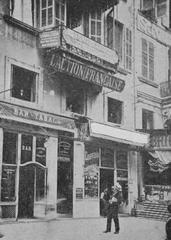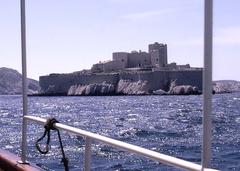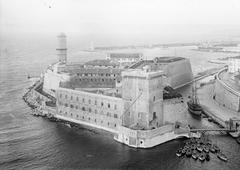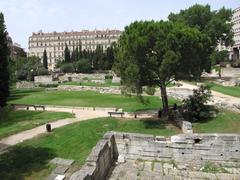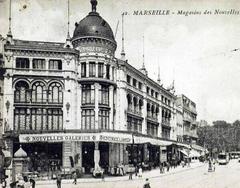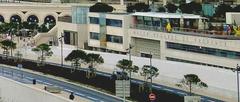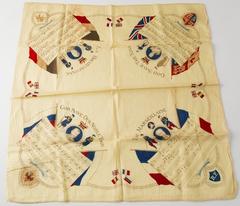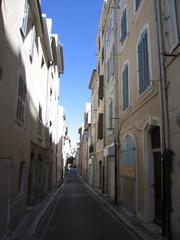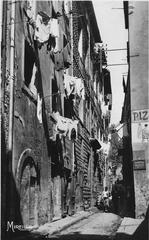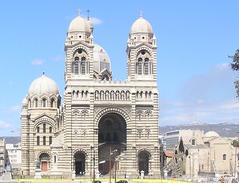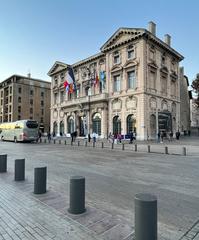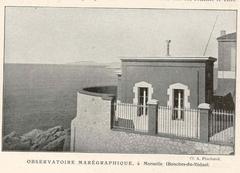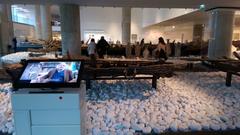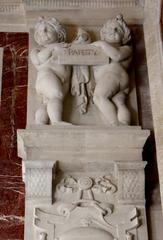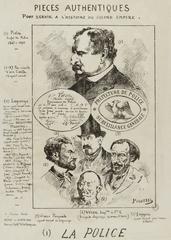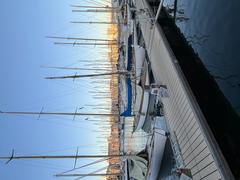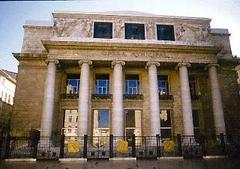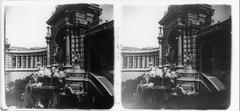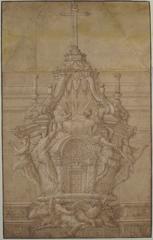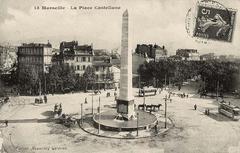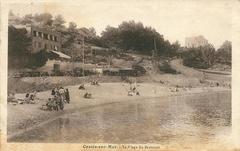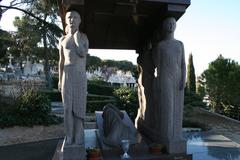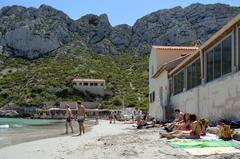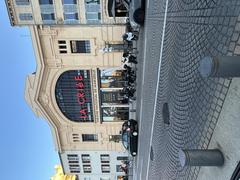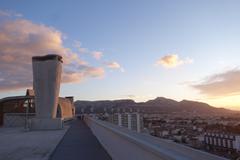
Hôtel-De-Ville Marseille: Visiting Hours, Tickets, and Historical Sites Guide
Date: 04/07/2025
Introduction
The Hôtel-de-Ville Marseille is much more than a city hall—it is a living symbol of Marseille’s civic heritage, architectural splendor, and Mediterranean identity. Overlooking the bustling Old Port (Vieux-Port) from its historic location on Quai du Port, this Baroque gem has witnessed the city’s evolution for centuries, from its medieval autonomy to its modern renewal. This in-depth guide covers the Hôtel-de-Ville’s history, architecture, visitor hours, ticketing, accessibility, nearby attractions, and practical tips, ensuring you make the most of your visit to one of Marseille’s most iconic landmarks. For updated visitor information and further reading, consult the Marseille Tourism website and the Marseille city hall portal.
Table of Contents
- Medieval Origins and Civic Administration
- The 17th-Century Baroque Transformation
- Architectural Features and Symbolism
- Surviving Turbulent Times
- Post-War Urban Renewal and 21st-Century Expansion
- Visiting Hours, Tickets, and Accessibility
- Nearby Attractions and Travel Tips
- FAQ: Hôtel-de-Ville Marseille Visiting Hours and More
- Conclusion
- References
Medieval Origins and Civic Administration
Marseille’s tradition of civic governance dates back to its origins as Massalia, founded by Greek settlers around 600 BCE. By the 13th century, the city’s notables and merchants had established a council, and historical records from 1221 show the communal council met in the private Bonnafous residence (fr.wikipedia.org). The first purpose-built “maison de ville” was erected between 1223–1225 along the city’s main commercial artery, the rue de la Loge. This early city hall symbolized Marseille’s growing autonomy and the right to self-administration, first negotiated between the Comte de Toulouse and the city’s elite in the 1130s.
The 17th-Century Baroque Transformation
The current Hôtel-de-Ville was commissioned in 1653, a time of urban renewal under Louis XIV. The old Maison de Ville was demolished to make way for a grander city hall, with the foundation stone blessed by Bishop Étienne de Puget (fr.wikipedia.org; marseilletourisme.fr). Designed by Jean-Baptiste Méolans and engineered by Enéas Bilondelle, the building’s construction spanned two decades, hindered by financial and political difficulties. Its Genoese Baroque style, with Provençal influences, reflects Marseille’s maritime ties and cosmopolitan character (fr.wikipedia.org).
Architectural Features and Symbolism
The Hôtel-de-Ville’s façade is a harmonious blend of Baroque elements: symmetrical wings, triangular pediments, and a grand balcony supported by Corinthian columns. Local limestone in pink and yellow hues lends the building its warm glow. Notably, the building lacks a staircase directly connecting the ground and first floors—a design reflecting the historical separation between merchants on the ground floor and aldermen above. Access between floors historically relied on a rear bridge (marseilletourisme.fr; livingnomads.com).
The roofline features a steep, slate-covered mansard roof punctuated by dormer windows, a blend of French Baroque and Genoese influences. The main entrance is crowned by the city’s coat of arms, designed by Pierre Puget, and flanked by symbolic sculptures (thetouristchecklist.com).
Surviving Turbulent Times
The Hôtel-de-Ville was at the heart of revolutionary events in 1789 and again during the Marseille Commune in 1871. It survived the destruction of the Old Port district during the liberation of World War II, remaining one of the few historic buildings standing (klook.com). Its historical value was recognized when it was listed as a Monument Historique in 1948 (fr.wikipedia.org).
Post-War Urban Renewal and 21st-Century Expansion
After World War II, the surrounding district was rebuilt (1946–1957) with the construction of the Pouillon buildings and the creation of Place Villeneuve-Bargemon, opening up new civic space and panoramic views (fr.wikipedia.org). In 2006, architect Franck Hammoutène designed a contemporary extension, adding 8,300 m² of interior space and integrating the modern Place Jules-Verne and Place Villeneuve-Bargemon. This expansion accommodates municipal needs while preserving the historical character of the site (klook.com).
Visiting Hours, Tickets, and Accessibility
- Visiting Hours: The Hôtel-de-Ville is generally open to the public Monday to Friday, 9:00 AM to 5:00 PM. Interior visits are usually limited to official guided tours or special events such as European Heritage Days in September. Always check the official website for up-to-date information.
- Tickets: Admission is free. Guided tours during special events may require advance booking but are typically free of charge.
- Accessibility: The building and adjacent esplanade are accessible to visitors with reduced mobility, with ramps and elevators available. Contact visitor services in advance for specific accommodations.
- Guided Tours: Tours in French and English are available on select days and by prior arrangement, offering insights into the building’s history, architecture, and civic role.
- Events: The esplanade regularly hosts markets, festivals, and civic celebrations, contributing to the lively atmosphere of the Old Port (france-voyage.com).
Nearby Attractions and Travel Tips
The Hôtel-de-Ville is ideally situated for exploring Marseille’s historic core:
- The Old Port (Vieux-Port): Cafés, markets, and boat tours just steps away.
- Le Panier District: Narrow streets, artisan shops, and colorful buildings.
- Basilique Notre-Dame de la Garde: The city’s iconic basilica, accessible by foot or bus.
- Pavillon Daviel: Historic courthouse nearby (worldcitytrail.com).
- MuCEM and Fort Saint-Jean: Major cultural sites within walking distance.
Travel Tips: Use public transport (metro, bus), wear comfortable shoes, and bring a camera to capture the façade’s beauty, especially in the golden light of late afternoon.
FAQ: Hôtel-de-Ville Marseille Visiting Hours and More
Q: What are the Hôtel-de-Ville Marseille visiting hours?
A: Generally Monday to Friday, 9:00 AM to 5:00 PM. Interior visits are limited to guided tours and special events.
Q: Is there an entry fee?
A: No, admission is free. Guided tours may require advance booking but are typically free.
Q: Can I visit the interior?
A: Interior access is limited to special events such as European Heritage Days. Check the official site for announcements.
Q: Is the building wheelchair accessible?
A: Yes, with ramps, elevators, and accessible public spaces.
Q: Are guided tours available in English?
A: Yes, by prior request.
Q: What nearby sites should I visit?
A: Le Panier, MuCEM, Fort Saint-Jean, and the Old Port markets.
Conclusion
Visiting the Hôtel-de-Ville Marseille is a journey through the city’s layered history, architectural elegance, and rich civic culture. Its Baroque façade and unique features, such as the separated merchant and civic spaces, reflect Marseille’s resilience and Mediterranean heritage. With free access, guided tours during special events, and excellent accessibility, the Hôtel-de-Ville welcomes all visitors to explore the heart of Marseille’s identity. For the best experience, consult official resources for updated visiting details and consider using the Audiala app for immersive audio-guided tours. Explore, discover, and connect with Marseille’s enduring spirit.
References
- Hôtel de Ville de Marseille, 2025, Wikipedia (fr.wikipedia.org)
- City Hall of Marseille, 2025, Marseille Tourism Official Site (marseilletourisme.fr)
- Discover Marseille, 2025, Cityzeum (cityzeum.com)
- Marseille City Hall Brochure, 2025, Marseille.fr (marseille.fr)
- Marseille Travel Guide, 2025, France Travel Blog (francetravelblog.com)
- Visiting Hôtel de Ville Marseille, 2025, The Tourist Checklist (thetouristchecklist.com)
- Pavillon Daviel in Marseille, 2025, World City Trail (worldcitytrail.com)
- Where to Stay in Marseille, 2025, ThisHotel.de (thishotel.de)
- Marseille Events, 2025, France Voyage (france-voyage.com)
- Marseille Attractions, 2025, PlanetWare (planetware.com)
- Marseille Travel Blog, 2022, Living Nomads (livingnomads.com)
- Marseille Travel Guide, 2025, Nomads Travel Guide (nomads-travel-guide.com)
- Hôtel de Ville, 2025, Klook (klook.com)


